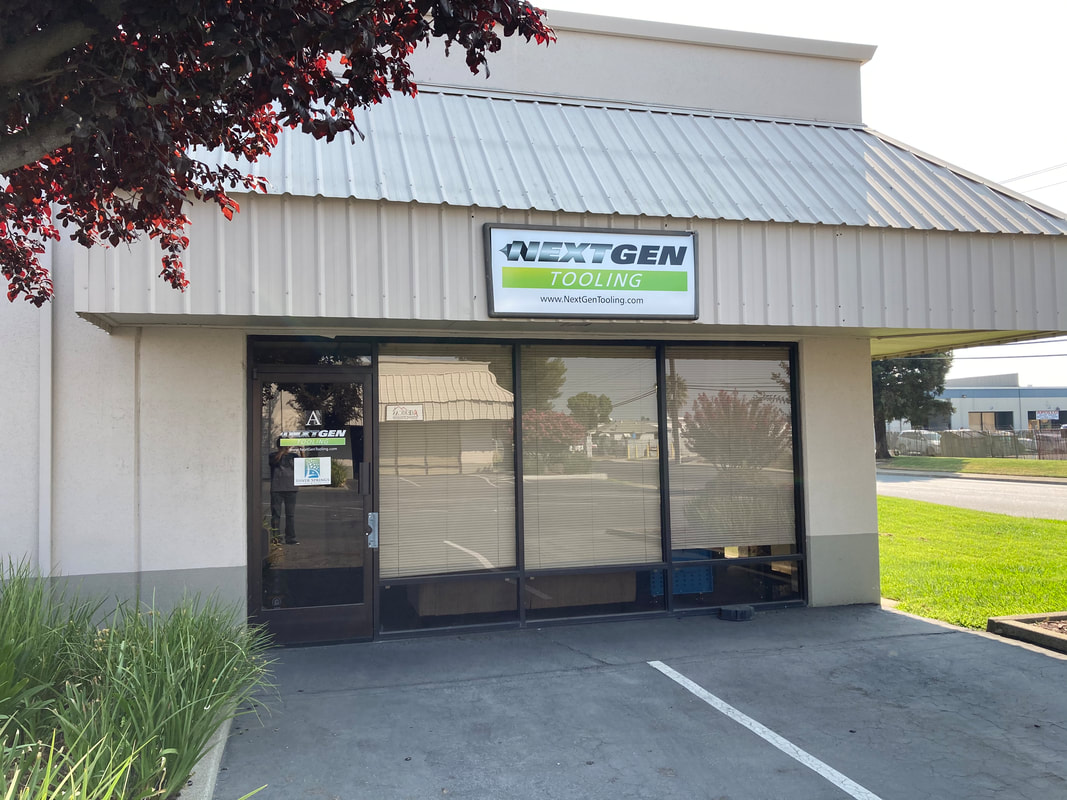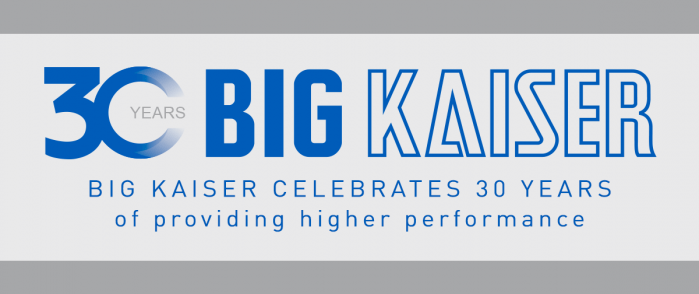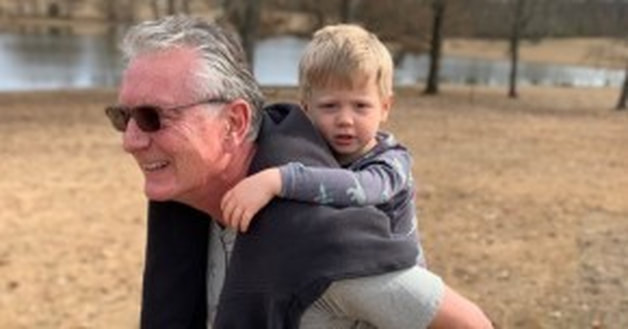|
Sacramento, CA. - Next Generation Tooling, LLC, a manufacturer's representative agency, founded in 1995 and servicing the California Nevada Arizona, Utah, Colorado and New Mexico CNC manufacturing markets has just opened TWO offices in California. Most of Next Generation Tooling's customers know them as "the Next Gen guys" according to Chris Savolainen, the Founder and President of 'Next Gen Tooling'. What was the rationale of opening not one, but two offices when the entire team has worked out of their own home offices for years? "We've grown our market service area quite a bit since we started out servicing just Northern California. We now include most of the Western States of the US. We've s been adding some of the best technical CNC application people we can find to support the unique mix of principles we represent. The products that we represent are what are considered very high performance tooling and workholding. It's some of the premiere products in our entire industry! We determined that we really needed a place to provide on-site technical training. We also needed to carry some inventory to support the unique needs of the aerospace, medical, electronics and defense industries that we support." Said Savolainen. Rob Aldama, Vice-President of Next Gen Tool picks up the story, "At first we thought that one training and showroom might be good enough, but as we started talk to our distributor, machine dealer and end-user manufacturing customers, we discovered that there was a real need for facilities in both Northern and Southern California. None of our competitors are providing the deep technical service that has helped us gain market share, so we really felt we should just take it to the next level and open two facilities." But what about the Pandemic? With the Covid-19 pandemic raging there are not a lot of companies expanding. Most are cutting costs and employees. When asked about this both Chris and Rob stated that their team of people have remained pretty busy throughout this entire period. Chris said "We get asked in to shops to provide technical support pretty often. Putting on the full body PPE suits has been kind of common for us during the past few months." Rob picked it up from there, "I think we may be some of the really select few that have been asked to come into shops because we're not just taking orders, we're reducing cycle time and we're improving efficiency" Chris jumped back in, "And maybe its a little bit self serving, We can have the equipment set-up at both locations instead of trying to bring it into a facility. It's actually a lot easier, faster and safer to bring people to one of our locations rather than try to move things with lots of sweat and heavy breathing in PPE." "Yea, We can bring people to either location and do the training. There are far less interruptions and the I think people learn a lot more, and learn it faster" stated Rob. NGT Warehouse and Training What types of training do they provide at Next Gen's new buildings? They start off with a lot of fundamentals that people running CNC machines may never had any formal training about. That's where their basic Training Classes fit in. 
But they also can go much deeper with their Advanced Part Manufacturing training series
3 Comments
As BIG KAISER celebrates 30 years, Chris Kaiser reflects on running a company from home again. It’s been 30 years since I started KAISER Precision Tooling USA, and I never imagined I’d be running this company from home again. Like most BIG KAISER employees, I’m working remote at least a few days each week to maintain the required social distance. I can relate to the experience many are having now as they juggle work and family at literally the same time. Isn’t this the experience of parents everywhere who are also entrepreneurs working to start a new business? Back in 1990, after living and working in the U.S. for nearly a decade, I started this company out of necessity. I knew we needed to change how we were selling the boring tools manufactured by my father’s company in Switzerland, Heinz Kaiser AG. I had a vision to increase sales with better marketing, product deliveries and customer service, but my goals weren’t shared by the agents and partners we had at that time. That’s how I found myself sequestered at home with two little boys regularly knocking on the door asking when I was going to come out and play. As much as I wanted to do that, I also needed to focus on setting up a new company from scratch. There was no building, no equipment, no staff. Many late nights were spent working with a friend in his basement, writing a business plan, setting up systems for accounting and IT, and making the first boring tool catalog. During the day I sought legal advice, met with lenders and looked for a facility that would house this new company. In July of that year, I was joined by my long-time partner, and now BIG KAISER Vice President, Jack Burley. Operations Manager Tim Grosch also started in that first year. There were many other friends and influential people along the way, but these two have been with me on this adventure since the very beginning. On August 1, 1990 – coincidentally also Swiss Independence Day – we opened the doors at our first facility in Elk Grove Village, IL. It was two minutes from my house so I could spend a lot of late nights at work, after dinner with my family, just as my father did when I was little. After 30 years, I’m proud to say we’ve had a good number of customers from the very beginning. Possibly the first was a Swiss-born machinist who carried Heinz Kaiser boring tools back from his vacation in Zurich to his job in the repair center at United Airlines in San Francisco. United remains a customer of BIG KAISER today. Some of those old boring tools are repairable and still in service. Many U.S. companies in defense and other industries bought SIP jig-boring machines made in Geneva, Switzerland. They also invested in precision boring tool kits – packed in a wooden case – from Heinz Kaiser AG. We’re grateful that companies like Bell Helicopter, Sikorsky, Caterpillar, John Deere, Metalex, Vermeer and Viking Pump – among others – are still with us to this day. I look forward to reuniting with long-time customers, partners and friends at a 30th anniversary celebration sometime later this year. In the meantime, I hope we can all get back to the office and a more normal routine very soon. Seeing my grandson on FaceTime and Zoom is just not as good as going outside to play!
Until then, stay well and stay positive. Chris Kaiser Is there any chance someone has a PICCOLO boring tool in the original wooden box from that time? I would love to have a photo of it. Join us at #IMTS2018! We'll be learning about new products at our principals booth. Check out our schedule, come join us and we'll learn some new things together! Wednesday September 12th
10:30 - 11:30 AM - NTK Cutting Tools Booth W-431664 1:00 to 3:00 PM - Big Kaiser Booth W-431610 Thursday September 13th 10:00 to 11:00 AM - Heimatec Booth W-433427 11:00 to 12:00 PM - 5th Axis Booth W-431158 1:00 to 2:00 PM - Precision Cutting Tools W-432164 Friday September 14th 10:00 to 11:00 AM - Carmex Booth W-431480 11:00 to 12:00 PM - OSG Booth W-432080 1:00 to 2:00 PM - Techniks Booth W-431075  This article originally appeared in the May 2013 / Volume 65 / Issue 5 of Cutting Tool Engineering titled "Evolving toward digital" By Matt Tegelman, BIG Kaiser Precision Tooling Inc. Boring tools with a digital readout aren’t the standard in U.S. shops, but their use is growing.Think about the number of digital equipment interfaces and interactions an operator has when machining. Machine operators use keypads and computers to run tooling programs and measure parts with digital gages and coordinate measuring machines. By definition, CAD/CAM work is accomplished digitally. Machine tool controls have digital displays. On most tool presetters—even simple ones without a vision system—the readout is digital. Bore gages are digital, whether it’s an air gage or a three-point-contact gage. There are still a few old-timers who trot out ID micrometers once in awhile, but most measurement devices are digital for speed and accuracy.
Still Kicking Analog readout technology isn’t dead because it’s still highly effective for the majority of low- to medium-level tolerance operations. Few shops have yet to make the switch to digital boring across the board, and it will be a long time before more do so on a regular basis. Digital boring heads cost 60 to 80 percent more than their analog counterparts. That said, as old boring heads need replacement and more operators become accustomed to the advantages of digital boring adjustments, there eventually will be a turning point in some operations where it makes sense to go all digital. This change won’t happen just because it’s the direction of the industry.
Don’t Sacrifice PerformanceIf a shop is considering moving from analog to digital boring tools, the best conversions are those that can be accomplished without having to replace any accessories—simple one-for-one boring head trade-offs. Still, ask questions to ensure this is the case with your shop. Users can defeat the purpose of digital ease of use if the head isn’t a 1:1 replacement and additional programming or tinkering is necessary when converting to digital. For instance, Kaiser’s 112 EWD, 310 EWD and 318 EWD digital boring heads are otherwise identical to their analog predecessors. They have the same boring ranges, cutting parameters and through-coolant capabilities, so an operator can swap an analog for a digital model with little or no reprogramming. All three series use the same accessories, such as boring bars and insert holders, as their nondigital counterparts.
Despite the obvious advantages of digital, the technology isn’t yet for everyone. But as manufacturing and technology continue to become more and more entrenched in the digital realm, there will be a tipping point after which digital boring is the norm. Some shops will just be ahead of the curve. CTE
About the Author: Matt Tegelman is the Kaiser product manager for BIG Kaiser Precision Tooling Inc., Hoffman Estates, Ill. For more information about the company’s boring tools and other products, call (888) TOOL-PRO or visit www.bigkaiser.com. Digital boring heads from Big Kaiser were designed to be a simple 1:1 match to their analog predecessors - same boring ranges, cutting parameters, and through-tool coolant capabilities - so an operator can swap an analog for a digital model with little or no reprogramming. Just like your cell phone or computer, it won't be long until you wonder how you ever lived without a digital interface. Make the leap to digital technology. WHY DIGITAL?
BIG Kaiser has introduced the new, large diameter Kaiser 318 Series—a complete tooling system supporting a variety of aluminum and steel components optimized for twin cutter rough boring, precision finish boring and precision OD turning operations.
The system supports spindle speeds of up to 6,600 SFM thanks to safe and secure "pinned to fit" light weight aluminum mounting components. The high strength aluminum components are hard coated to protect against wear and corrosion, and all assemblies deliver high pressure coolant through the tools to cutting edges. "The 318 series features aluminum extension slides that allow for diameter and length setting adjustments without a tool presetter," says Jack Burley, BIG Kaiser vice president of sales and engineering. "The simplicity of this system virtually eliminates operator error during assembly and promotes safety during operation." BIG Kaiser Precision Tooling is a leader in high precision tooling systems and solutions. With brands including Kaiser, BIG Daishowa, Speroni, Unilock, Sphinx and more, BIG Kaiser's line is focused on extreme accuracy and repeatability.  A Case Study The end-user is machining bushings made from 17- 4 stainless steel using a Miyano lathe, with 150 PSI through-tool coolant Previously the customer was using 4 tools to complete the job. A 0.551" (14mm) Chamdrill began the drilling process, followed by a 0.382" (9.7 mm) solid carbide drill. A 3/8" end mill was brought in to perform multiple operations, including a counterbore. The boring bar then finished the hole to size, in a total cycle time of 1 minutes and 2 seconds. Looking for performance improvements, the customer asked if Allied had a multiple operation tool that could help to reduce the cycle times in this application. Allied Machine & Engineering's Solution Allied recommended a 0.551" (14mm) EcoCut tool to began the operation, followed by the 0.382" (9.7 mm) solid carbide drill. Then a 0.394" (10mm) EcoCut tool was brought in to complete the form. The boring bar finished the part for exact size and finish tolerance, while providing edge breaks and corner radii. The new total cycle time was 55 seconds. The outcome met the customer’s goals of a reduction of cycle time, which resulted in a lower cost per hole. Benefit The overall cycle time was reduced by 7 seconds for a time savings of 11.5%, thanks to the EcoCut tooling. The cost per hole dropped from $2.11 to $1.40, which delivered a cost savings of 33.5%. This lower cost per h*** was obtained as a result of a dramatic decrease in tooling cost due to the use of a multi-functional tool. Allied Machine and EcoCut made a difference for the pleased customer. |
NEWSOur NEWS blog section is written by several different people. Sometimes, it from our team here at Next Generation Tooling & at other times it's by one of the manufacturer's we represent. Archives
July 2024
Categories
All
|
About
|
© 2024 Next Generation Tooling, LLC.
All Rights Reserved Created by Rapid Production Marketing
|












 RSS Feed
RSS Feed
